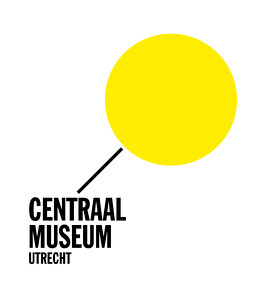On the necessity of art and gardening
September 11, 2021–May 1, 2022
Agnietenstraat 1
3512 XA Utrecht
The Netherlands
The Botanical Revolution: On the Necessity of Art and Gardening at Centraal Museum Utrecht has been extended to May 1. In this exhibition, contemporary artists reflect on the ecological and metaphorical significance of gardens. What do gardens tell us about the times we live in? In addition to contemporary artworks by Maria Thereza Alves, Sara Sejin Chang, Jeremy Deller, Lungiswa Gqunta, Kerry James Marshall, Patricia Kaersenhout, Jennifer Tee, Henk Wildschut and others, the exhibition offers a transhistorical perspective through special loans of works by, among others, Albrecht Dürer, Vincent van Gogh, Maria Sibylla Merian and Tetsumi Kudo. These works reveal how deeply rooted the image is of the garden as a mirror of society.
The garden as a metaphor for our relationship with nature
The garden has appealed to the imagination for centuries. In different cultures and religions, the garden is associated with a harmonious and enclosed refuge, places where the cycle of life—growth, blossoming and decay—unfolds. But gardens also reflect society. In the garden, nature is brought under control. It is precisely in this tension between nature and culture that the world manifests itself. The exhibition’s subtitle derives from Gerrit Komrij’s essay “Over de noodzaak van tuinieren,” or “On the Necessity of Gardening” (1990), in which he describes how the perception of gardens throughout history has always been closely entwined with how people view the world. In Komrij’s view, the garden is a metaphor for our relationship with nature. The way nature is shaped in gardens reveals something about prevailing and possibly changing conceptions in society. After all, gardens are also places of societal privilege, and the flowers and plants found there tell us something about migration and (colonial) history.
Global warming and the COVID-19 pandemic are forcing us to radically redefine the current relationship between culture and nature. We are forced to critically re-examine ourselves and our own roles, not as opposed to nature but as part of it. The contemporary artists pose critical questions about the way in which we exploit and exhaust natural resources, and challenge us to radically reshape our relationship with the natural world. The Botanical Revolution: On the Necessity of Art and Gardening is an investigation by Centraal Museum and these artists to determine the deeper significance of gardens and our contemporary relationship with nature.
Participating artists and works by: Derk Alberts, Maria Thereza Alves, Yael Bartana, Jurgen Bey, Juliette Blightman, Abraham Bloemaert, Johannes Bosschaert, Ambrosius Bosschaert de Jonge, Andrea Büttner, Persijn Broersen & Margit Lukács, Sara Sejin Chang (Sara van der Heide), Meester van Delft, Jeremy Deller, Elspeth Diederix, Stan Douglas, Albrecht Dürer, Ian Hamilton Finlay, Vincent van Gogh, Lungiswa Gqunta, Hendrick Goltzius, Rumiko Hagiwara, Saskia Noor van Imhoff, Patricia Kaersenhout, Tetsumi Kudo, Herman Justus Kruyder, Jort van der Laan, Hans van Lunteren, Kerry James Marshall, Maria Sibylla Merian, Otobong Nkanga, Maria Pask, Otto van Rees, Willem de Rooij, Roelant Saverij, Jennifer Tee, Henk Wildschut.
On the Necessity of Gardening: An ABC on Art, Botany and Cultivation
In addition to a hall booklet, a richly illustrated publication has been published in collaboration with Valiz. In this abecedarium, the cultural-historical tradition of gardens, artists’ gardens, but also concepts such as the Anthropocene are discussed. With contributions by: Maria Barnas, Jonny Bruce, Laurie Cluitmans, Liesbeth M. Helmus, Erik A. de Jong, René de Kam, Alhena Katsof, Jamaica Kincaid, Bart Rutten, Catriona Sandilands, Patricia de Vries. The publication was designed by Bart de Baets.
Annex
Persijn Broersen & Margit Lukács , Fix the Variable, Exclude the Accidental, Eliminate the Impure, Unravel the Tangled, Discover the Unknown, 2021 collectie / collection Centraal Museum, Utrecht acquisition with the support of the Mondriaan Fund 2020–21 (commissioned by the museum)
The perception of nature and the construction and manipulation of the landscape play a prominent role in the work of Persijn Broersen and Margit Lukács. For the adjoining exhibition space the Annex, they made a new work based on the collection of exotic plants assembled around 1737 by George Clifford III (1685–1760), an Amsterdam-based banker and director of the Dutch East India Company. The Swedish botanist Carl Linnaeus (1707–1778) classified these plants according to his own system. However, he did not necessarily base his classifications on an objective observation of the plants, but on an idealised version. In the video installation by Broersen & Lukács, these individual plants come to life as a fierce crowd and threaten to break free from the straitjacket imposed on them. Together with concert pianist Daria van den Bercken (1979), the duo has made a compilation of musical pieces that takes this manipulation even further. Stirring music transports us into a romantic illusion that is abruptly broken by a protest song by the revolutionary composer Frederic Rzewski (1938–2021), who used the piano as a tool for transformation. This video is also seen on the LED screens on the facade of the museum.
The Botanical Revolution: On the Necessity of Art and Gardening has been extended until May 1. The exhibition design is in the hands of design agency Formafantasma.







